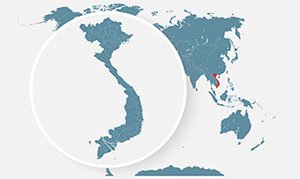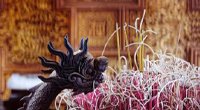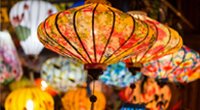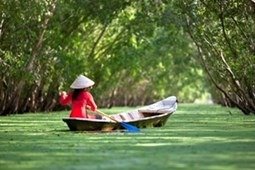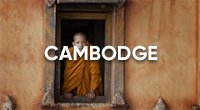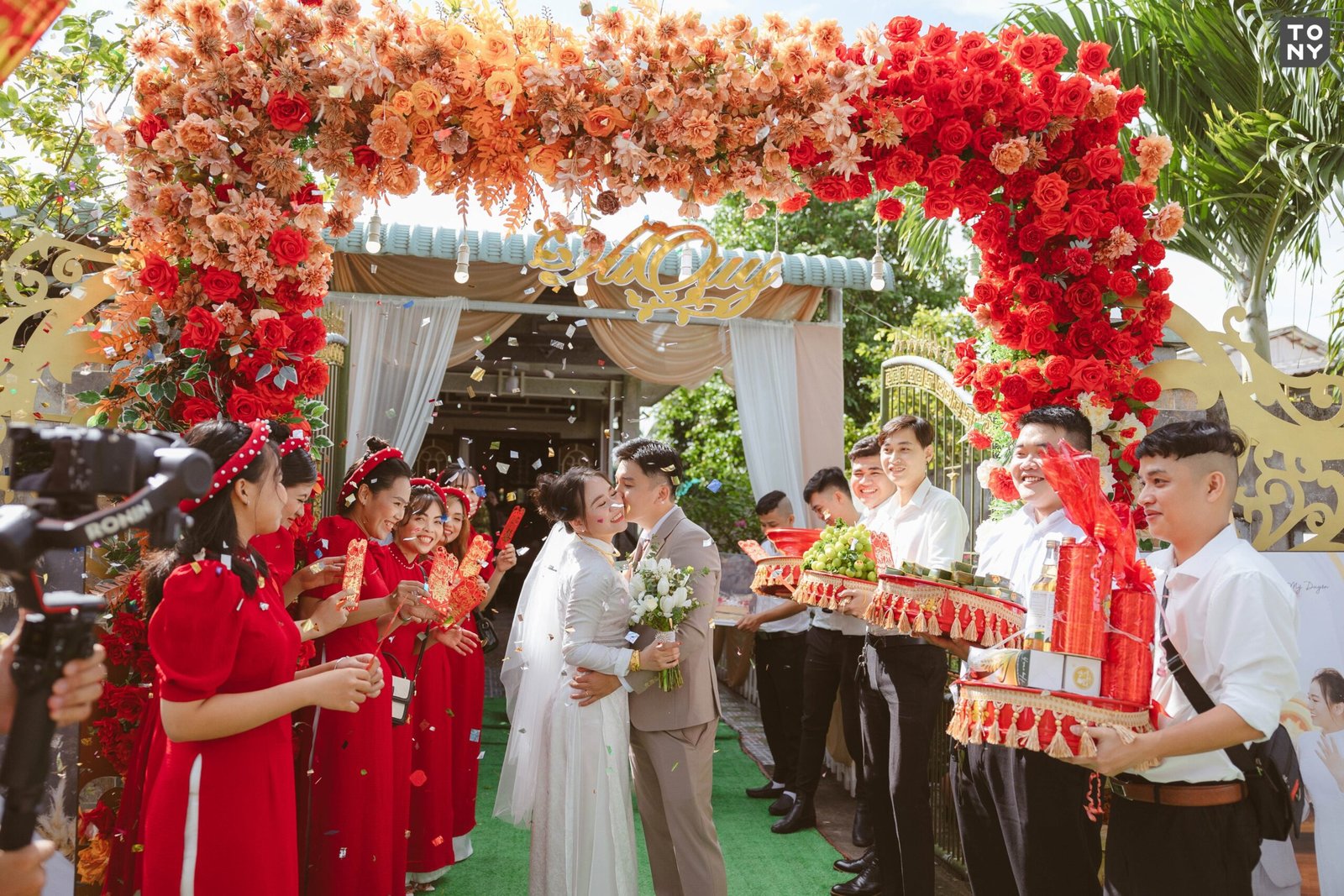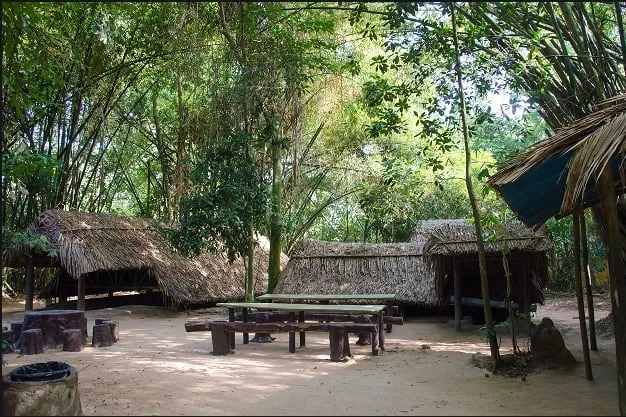Contents
ToggleThe Six Essential Vietnamese Wedding Ceremonies
- Proposal Ceremony (Lễ dạm ngõ)
This intimate meeting usually takes place weeks or months before the wedding. The groom’s parents, accompanied by close relatives, visit the bride’s home to officially express their family’s wish for marriage. Although modest in scale, this ceremony is a symbol of sincerity, respect, and the first step toward uniting two families. - Engagement Ceremony (Lễ ăn hỏi)
Among the most elaborate rituals, the engagement ceremony formalizes the marriage promise. The groom’s family arrives with trays of offerings — betel leaves, areca nuts, tea, rice wine, and traditional cakes — beautifully wrapped in red silk. During this event, both families introduce their members, exchange incense prayers, and symbolically announce the couple’s future union. - Requesting the Bride (Lễ xin dâu)
Before the bride can leave her home, the groom’s family sends representatives to “ask permission” from her parents. This ritual highlights filial piety and respect for parental blessings. It often takes place just before the wedding procession. - Bride Procession (Lễ rước dâu)
The highlight of the wedding day, this colorful procession sees the groom, his family, and relatives bringing gifts as they formally escort the bride to his home. Traditional music, laughter, and blessings accompany the journey, symbolizing joy and good fortune for the couple’s new life together. - Wedding Feast (Lễ cưới)
After rituals at the ancestral altar, the celebration continues with a lively banquet. Dozens (sometimes hundreds) of relatives, friends, and neighbors gather to enjoy a feast of Vietnamese specialties. Speeches, toasts, and lively conversations make this event both a family reunion and a joyful community festival. - Post-Wedding Visit (Lễ lại mặt)
A few days later, the couple returns to the bride’s family with small offerings such as fruits, tea, or cakes. This gesture expresses gratitude toward her parents and reinforces the ties between the two families, ensuring harmony in the couple’s married life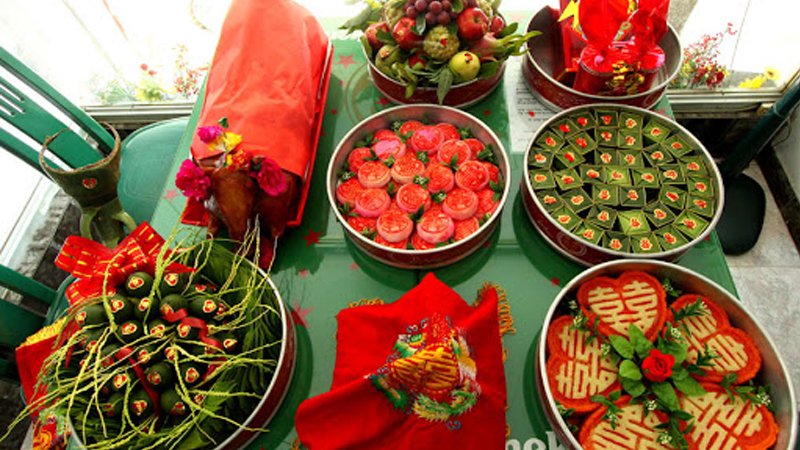
The Six Essential Vietnamese Wedding Ceremonies
Symbols in Vietnamese Wedding Traditions
Every detail carries meaning:
- Song Hỷ (Double Happiness) – emblem of unity and joy.
- Monetary Offering (Tiền nạp) – a gesture of respect and support from the groom’s family.
- Bánh Phu Thê (Husband-and-Wife Cake) – sweet symbol of marital fidelity and harmony.
- Even Numbers (8, 10, 12) – represent balance, prosperity, and completeness.
- Doves – symbols of love and loyalty.
- Red Color – dominant in wedding attire and decorations, believed to bring luck and ward off misfortune.
- Wedding Rings – universal symbol of eternal commitment.
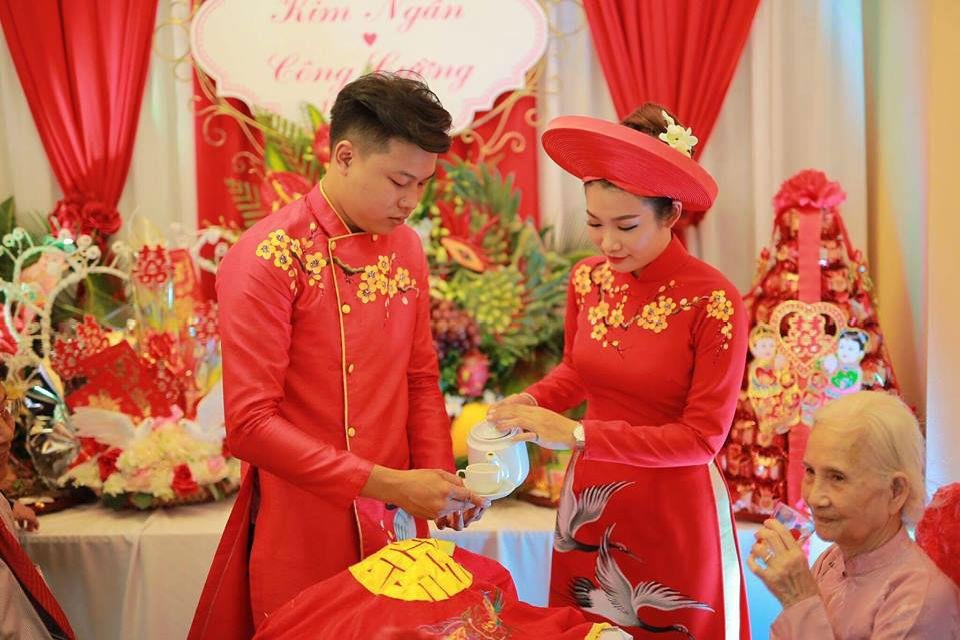
Regional Differences
- Northern Vietnam – Weddings here are the most traditional and formal. Every step follows ancestral customs, and great emphasis is placed on family honor. The ceremonies are often elaborate and meticulous.
- Central Vietnam – Strongly influenced by Huế’s imperial traditions, weddings in this region highlight ceremonial grace and symbolism. Rituals are elegant, with a focus on aesthetic beauty and refined gestures.
- Southern Vietnam – More relaxed and cheerful, southern weddings emphasize festivity over formality. Rituals may be simplified, but celebrations are lively, with abundant food, music, and a warm, welcoming spirit.
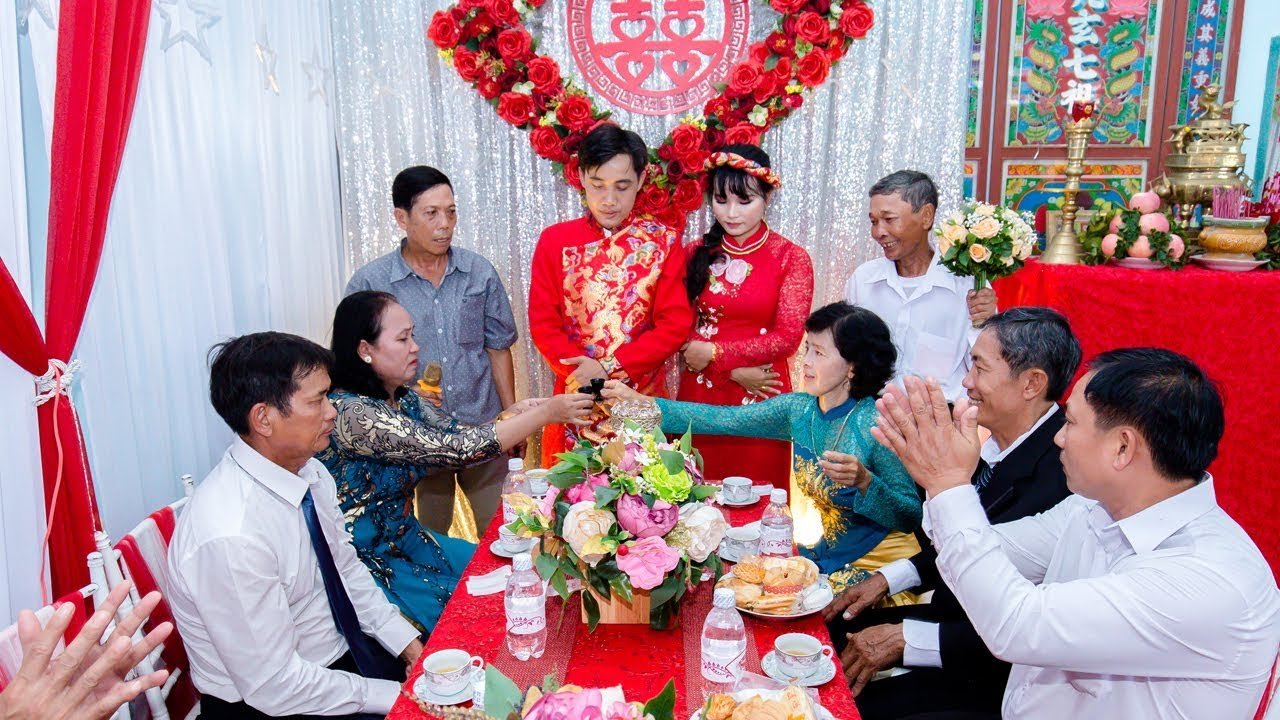
Traditional Wedding Outfits
- Bride & Groom – The iconic Áo Dài is worn in vibrant colors such as red, yellow, pink, or green, often embroidered with phoenixes, dragons, or floral motifs. Brides may wear an ornate headdress (khăn vấn or crown-style tiara), while grooms complement with formal accessories or a matching Áo Dài.
- Families – Mothers often wear silk Áo Dài in elegant shades, while fathers typically wear Western-style suits or traditional vests.
- Bridesmaids & Groomsmen – Usually dressed in coordinated Áo Dài sets, or in modern formal wear, depending on the family’s preference and the tone of the wedding.
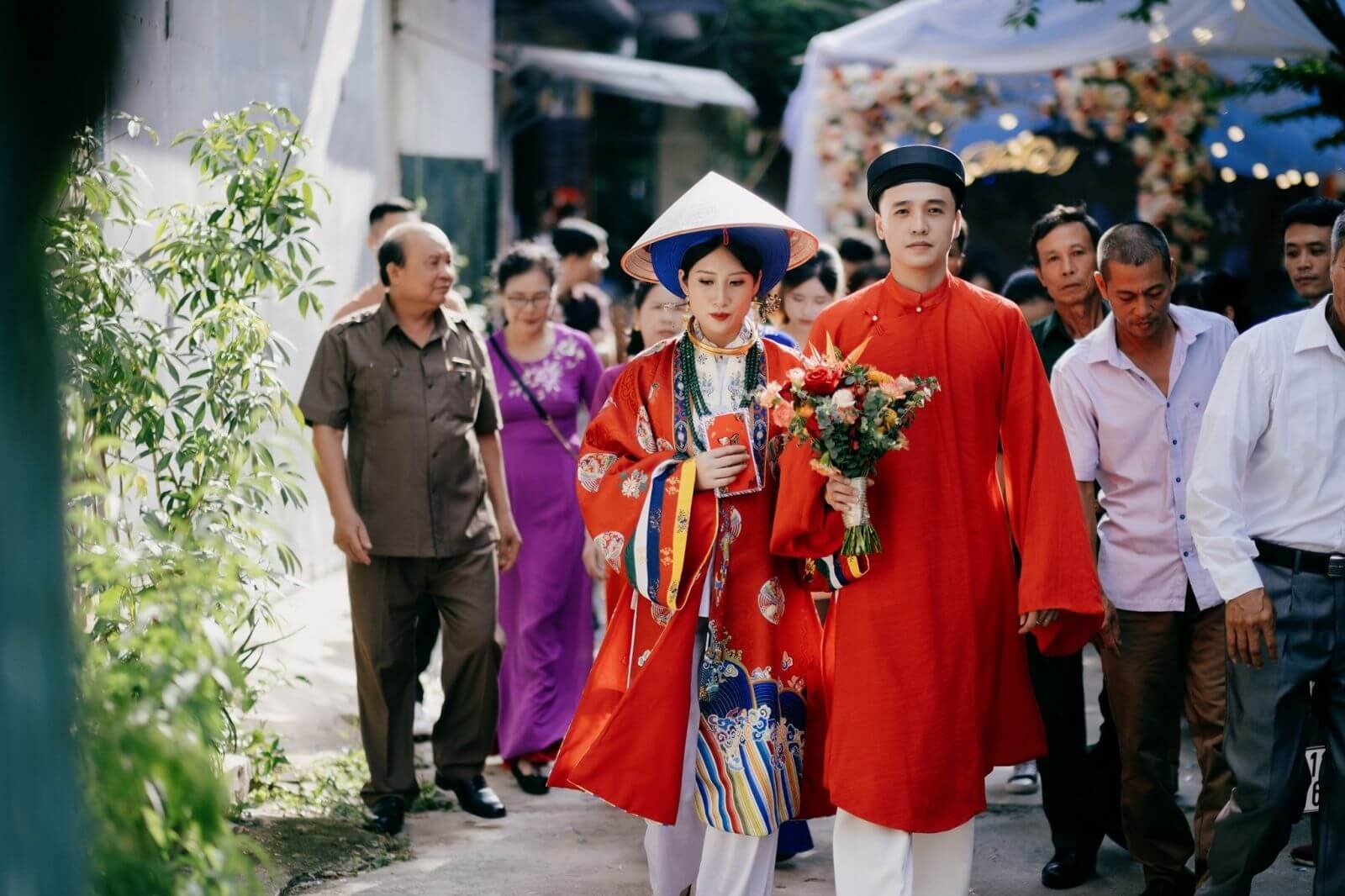
Wedding Taboos and Beliefs
Vietnamese weddings carry centuries of beliefs meant to safeguard harmony and prosperity:
- Unlucky Ages (Kim Lâu) – Certain ages in the lunar calendar are believed to bring misfortune if chosen for marriage. Families carefully consult astrologers before setting dates.
- Bride’s Mother Tradition – The bride’s mother traditionally does not escort her daughter to the groom’s house, as this is thought to bring separation.
- Looking Forward – The bride must not look back during the procession, symbolizing her commitment to her new life.
- Offerings on the Road – Rice, salt, or coins may be scattered to invite abundance and ward off bad luck.
- Bridal Chamber Restrictions – Certain guests, such as widows, mourners, or divorced women, traditionally avoid entering the newlyweds’ chamber to prevent misfortune.
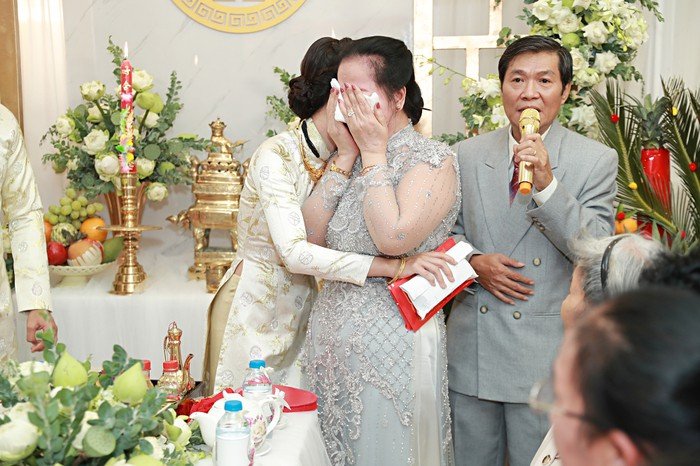
Final Thoughts
Vietnamese weddings are not just about two individuals but about families, traditions, and cultural heritage. Each ritual, offering, and outfit tells a story passed down through generations.
Whether you’re attending as a guest or simply curious about Vietnamese culture, witnessing a wedding in Vietnam offers a warm, colorful, and unforgettable experience.

